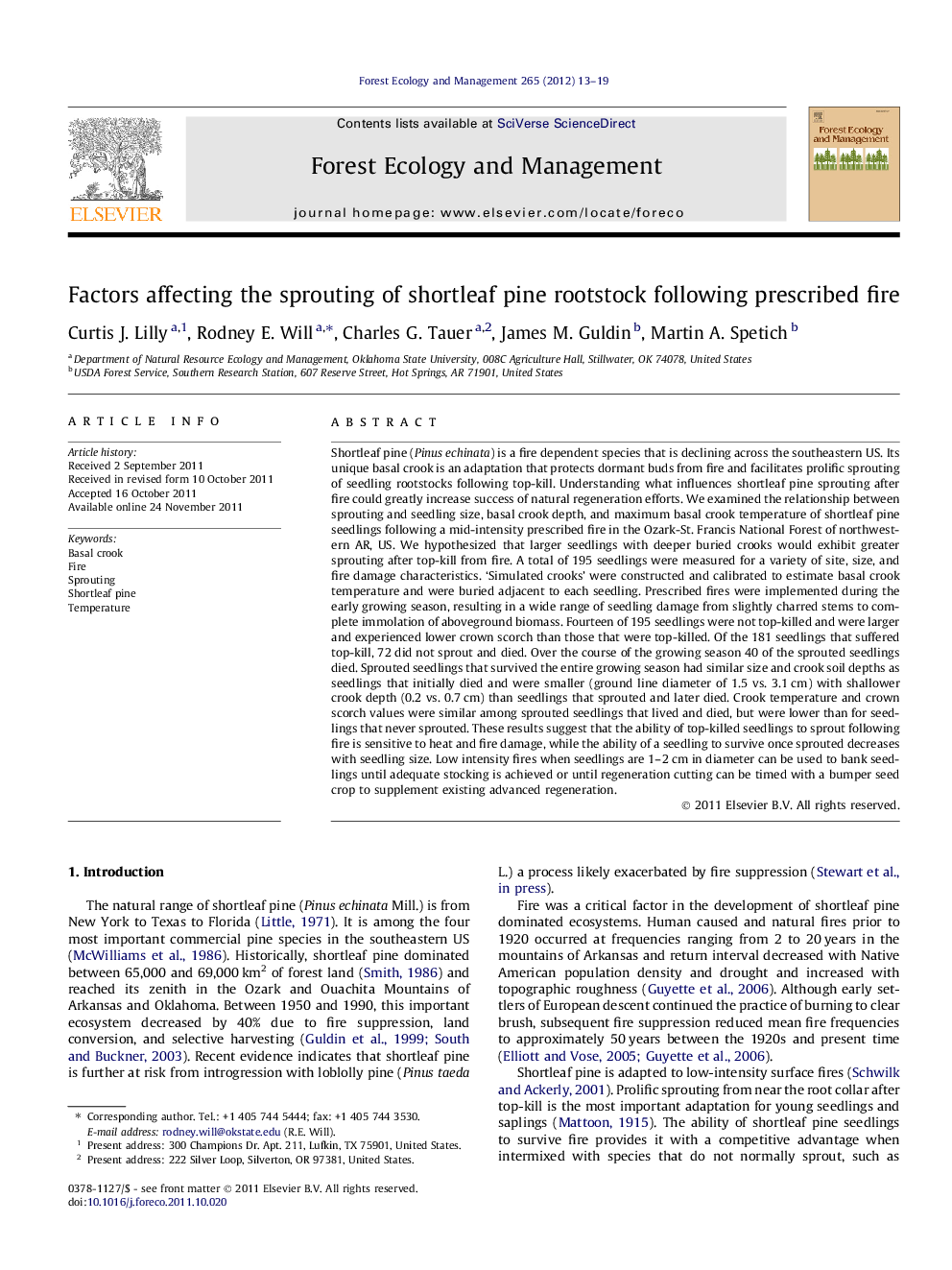| کد مقاله | کد نشریه | سال انتشار | مقاله انگلیسی | نسخه تمام متن |
|---|---|---|---|---|
| 87553 | 159256 | 2012 | 7 صفحه PDF | دانلود رایگان |

Shortleaf pine (Pinus echinata) is a fire dependent species that is declining across the southeastern US. Its unique basal crook is an adaptation that protects dormant buds from fire and facilitates prolific sprouting of seedling rootstocks following top-kill. Understanding what influences shortleaf pine sprouting after fire could greatly increase success of natural regeneration efforts. We examined the relationship between sprouting and seedling size, basal crook depth, and maximum basal crook temperature of shortleaf pine seedlings following a mid-intensity prescribed fire in the Ozark-St. Francis National Forest of northwestern AR, US. We hypothesized that larger seedlings with deeper buried crooks would exhibit greater sprouting after top-kill from fire. A total of 195 seedlings were measured for a variety of site, size, and fire damage characteristics. ‘Simulated crooks’ were constructed and calibrated to estimate basal crook temperature and were buried adjacent to each seedling. Prescribed fires were implemented during the early growing season, resulting in a wide range of seedling damage from slightly charred stems to complete immolation of aboveground biomass. Fourteen of 195 seedlings were not top-killed and were larger and experienced lower crown scorch than those that were top-killed. Of the 181 seedlings that suffered top-kill, 72 did not sprout and died. Over the course of the growing season 40 of the sprouted seedlings died. Sprouted seedlings that survived the entire growing season had similar size and crook soil depths as seedlings that initially died and were smaller (ground line diameter of 1.5 vs. 3.1 cm) with shallower crook depth (0.2 vs. 0.7 cm) than seedlings that sprouted and later died. Crook temperature and crown scorch values were similar among sprouted seedlings that lived and died, but were lower than for seedlings that never sprouted. These results suggest that the ability of top-killed seedlings to sprout following fire is sensitive to heat and fire damage, while the ability of a seedling to survive once sprouted decreases with seedling size. Low intensity fires when seedlings are 1–2 cm in diameter can be used to bank seedlings until adequate stocking is achieved or until regeneration cutting can be timed with a bumper seed crop to supplement existing advanced regeneration.
► Shortleaf pine sprout from a basal crook after top-kill from fire.
► Sprouting is reduced due to high temperatures and crown scorch.
► Sprouts survive best after sprouted if seedlings are between 0.6 and 1.6 cm in ground line diameter.
► Shortleaf pine sprouts can be used as a source of advanced regeneration.
Journal: Forest Ecology and Management - Volume 265, 1 February 2012, Pages 13–19